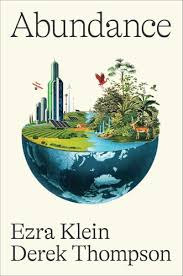As policy, the abundance agenda was inevitable. It is a reaction to a pollyanna-ish view that assumed away the complexity and hard choices of the energy transition. Its popularity is a learning story.
One of the joys of teaching is helping students develop a deep appreciation for the various dimensions of complex problems – in my case, energy and climate policy problems. We try to build that deeper understanding in the classroom, together — not by me downloading facts into their brains, but by working through cases and problems together. The objective is to build appreciation for complexity bit by bit, in much the same way a dots of a pointillist painting eventually create a full picture.
This kind of learning requires a continuous sense of intellectual humility, a sense that there is always more to learn and that that learning may change your understanding of problems you care about. To many people, the process of gaining deep expertise in this way is exciting.
So, one of the frustrations of growing old in the Internet age is watching talented young people commit themselves online to premature conclusions about complex problems before they have had the chance to develop that deeper understanding. Today’s attention economy rewards confident-sounding apparent expertise over the real thing much more powerfully than ever before. It is an eternal irony that expertise brings less certainty and more circumspection. But social media reinforces premature certainty in new and powerful ways.
Which brings us back to the abundance agenda.
As far as I can tell, the abundance agenda is a set of ideas that academics have been writing about for a long time, and to which moderate-left[i] think tanks assigned this label within the last decade. The idea recently gained a wider audience when championed by two online idea merchants, Ezra Klein and Derek Thompson, via their bestselling 2025 book, Abundance.
The academic literature from which this idea is derived is more nuanced than the book, but as far as I can tell the book conveys the big ideas in ways that are mostly faithful to that research. Most readers of this blog already understand the gist of the abundance agenda: i.e., that in an era of growing economic inequality, leaders [read: blue state politicians] who fail to deliver real benefits to working-class voters [read: get stuff built and bring down prices] cannot expect those voters’ political support at election time.
The argument seems to have been framed mostly with cities in mind, and the book’s authors credit regulatory red tape for Democrats’ failure to get those things done. Why have Democrats failed in this way? Democrats have become the party of educated urban elites who tend to be effective opponents of things like high-density housing and energy infrastructure in their backyards. Therefore, Democratic politicians have more and more trouble building those things because their most politically active constituents don’t want them.
Abundance as policy
The Klein and Thompson book has attracted criticism from the left and the right, and I don’t intend to weigh in on those criticisms here. But as someone who has observed the way NIMBYism has shaped the energy sector over the last four decades, I like the abundance idea, for two big reasons.
First, it rejects the “degrowth” approach and focuses instead on inequalities of distribution. Rightly or wrongly, degrowth has been political poison ever since Jimmy Carter asked us to turn down our thermostats 50 years ago. The human desire for affordable comfort (and ever more comfort, made ever more affordable) is basic, and most voters cannot relate to the idea of suppressing, or feeling guilty about, that desire. That political truth matters because progress on climate policy stalls when Democrats — the only party championing an energy transition — do not control the policymaking branches of the national government.
Second and just as importantly, the abundance agenda offers a counterpoint to some of the hasty conclusions to which activists on my side of the political aisle tend to leap when their hedgehog[ii]-like dedication to one important objective [read: reducing carbon emissions] blinds them to the other things that matter to voters — things they would have come to appreciate had they been more curious and less judgmental from the start.
Since Green New Deal resolution that followed the 2018 blue wave election, Democrats have been engaged in the painful process of confronting the difficult value choices associated with transitioning the economy to low-carbon energy sources. Ideas like rapidly phasing out fossil fuel use or transitioning to widespread government ownership of energy infrastructure triggered sincere objections from politicians concerned about deficits, the reliability of the energy supply, and affordability. That reckoning continues.
To be fair, jumping to hasty conclusions is part of how we learn. We all do it sometimes. It is part of the set of experiences that bring wisdom. But it brings wisdom only to those who let it. And it is much more difficult to be open to that kind of learning if you have committed yourself to a position firmly and publicly. And as we grapple with the urgent problem of climate change inside insulated, ideologically-homogenous informational ecosystems, it is easy to lose the habit of thinking critically about the policies we want. Instead, we tend to translate what we want to be true into firm beliefs about what is true, more quickly and efficiently than ever before. From there, we infer that those who disagree must be corrupt, ignorant, disingenuous, selfish or evil.
If the abundance agenda helps to burst some of those narratives, I welcome that. It also seems to me to be good policy.
Consider housing. According to a home construction data firm, San Francisco and Los Angeles built 3.1 and 5.5 new housing units per thousand existing homes, respectively, in 2024. By contrast, my hometown of Austin, TX built 28.6 units per thousand. Not coincidentally, rental costs in Austin declined this year. And rental costs in those California cities are 50 percent higher than in Austin, despite the fact that Austin’s population grew at a rate three times that of the two California cities.
When it comes to energy, both California and Texas have built a lot of renewable energy and battery storage. But California’s residential electric rates are twice those of Texas. There are vehement disagreements among experts as to why that is (see here and here), but those debates mean little to people who live in California’s Central Valley, where energy demands are higher and median incomes lower than in California’s coastal cities.[iii] The abundance agenda is intended to speak to those people, most of whom voted GOP in 2024.
We may want the energy transition to consist only of easy win-win choices, but it doesn’t. We may want voters to prioritize climate impacts over energy affordability, and reliability, but they don’t. We may want to believe that local opposition to siting energy infrastructure is selfish and misguided when opposing clean energy projects, but sincere and public-spirited when opposing fossil fuel projects. But that isn’t true either.
Building much more housing in expensive places is the right policy irrespective of NIMBY opposition. Building better public transit enhances economic opportunity for working class people, irrespective of NIMBY opposition. Building cheap, clean renewable energy can (in many places) simultaneously reduce pollution and bring down electric rates, irrespective of NIMBY opposition. Building more high-voltage transmission lines wherever it is needed brings down rates for everyone, and helps add more cheap renewable energy to the grid. These aren’t pure win-win actions, but they help the people who need help.
Abundance as politics
If voters come to associate Democrats with delivering economic benefits along side climate progress, that ought to make for a more politically-durable energy transition. Right? Isn’t abundance also good politics for Democrats?
Plenty of people think so. The case for it is intuitive. If Democrats deliver in ways that make most people’s lives better, voters will elect more Democrats. Electing Democrats, in turn, ought to make Congress friendlier to stronger climate policy, which is necessary for real climate progress.
But if you have read my book or this blog, you already know why that argument may not be right. The reasons come in two (familiar) parts.
First, geographic partisan sorting has made more than 80% of congressional seats “safe” for one party or the other. That means that replacing congressional Republicans with pro-abundance Democrats is extremely unlikely in most places. And the few districts where it is most likely tend to be outside of cities, where many of the concrete particulars of the abundance agenda seem to fit less neatly. (About which, see Reviving Rural America, as well as my review of that book on this blog.)
Second, successful abundance policies will make a difference to voters only if they are salient to voters at election time. The IRA delivered tangible benefits to GOP states and districts, and to unions. But that did not help Democrats in the 2024 election. If voters consume “news” that obscures Democrats’ policy accomplishments and aims to build loyalty to the GOP (as is the practice on FoxNews, OAN, Newsmax, etc.), then abundance successes may not change votes. A recent blog post from Matthew Yglesias offered an illustration of this phenomenon.
Probably one of the most insightful things I heard about Biden-era politics was from a shop steward for an industrial union in Pennsylvania who I met pretty randomly at an event in Reading. … [H]e said that if the White House wanted his advice on how to win the votes of more of his members, he would tell them that Democrats need to be more moderate on immigration, guns, crime, and “trans stuff.”
In an era of bubbled, fragmented, ideological and social media, propagandists [read: advocacy journalists] determine the issues on which voters focus. That union official perceived Democrats as champions of cultural changes with which his members are uncomfortable. If the news consumed by union members or swing district voters cultivates the sense that Democrats care more about those issues than about the economic prospects of non-urbanites, abundance may not have the desired electoral effects. Stated differently, what is true matters less than what voters believe to be true. That is why Donald Trump does not care if crime in Washington, DC is actually out of control; all that matters is the GOP voters believe that it is.
Such is the power of the propaganda machine.
Changing votes requires changing perceptions and beliefs, which in turn requires recognizing that the truth no longer wins out in public debate – even over the long run. That puts the onus on all Democrats and climate champions to engage in a long term project of spreading the truth to our friends, family, neighbors and co-workers: to stop avoiding difficult conversations and to act as representatives of the groups their media likes to demonize. As described in chapter 6 of my book, research tells us that those conversations can be productive. We just have to develop the courage and skills to make that happen.
It can only help when we talk politics with those who share some of our cultural identities — people from the same neighborhood, workplace, friend group, family — but whose political choices are different from our own. Those sorts of conversations make it harder for us to demonize the other party or ideology. They humanize the other side.
None of which is any reason to abandon enthusiasm for the abundance agenda. Building more housing, public transport, and low-carbon energy makes sense. Try not to be picky about exactly when, how, and where that happens. Try not to be one of those “I’m for [more housing/clean energy/public transit] but just not here.”
Try to be an advocate for individual housing/energy/transit projects in your community. Vote “yes.” Show up at meetings or email decision-makers. Don’t let the NIMBYs be the only voices decision-makers hear. Without you, the government decision maker will be forced to choose between the developer and “some of my constituents.” That usually doesn’t end well for more affordable housing and energy. – David Spence
—————
[i] There is a conservative version of the abundance agenda in energy, which disregards the climate impacts of new energy infrastructure altogether. I am focusing here on the version that aspires to reconcile Democrats’ economic policy objectives with their climate policy objectives.
[ii] See Isaiah Berlin’s 1953 essay about myopic theorizing vs. generalist empiricism, The Fox and the Hedgehog.
[iii] For example, the average monthly electric bill in Fresno (central valley) is $247/month, while it is $225/mo. In Los Angeles. The median income in Fresno County is $88,200; it is in Los Angeles County it is $98,200.



